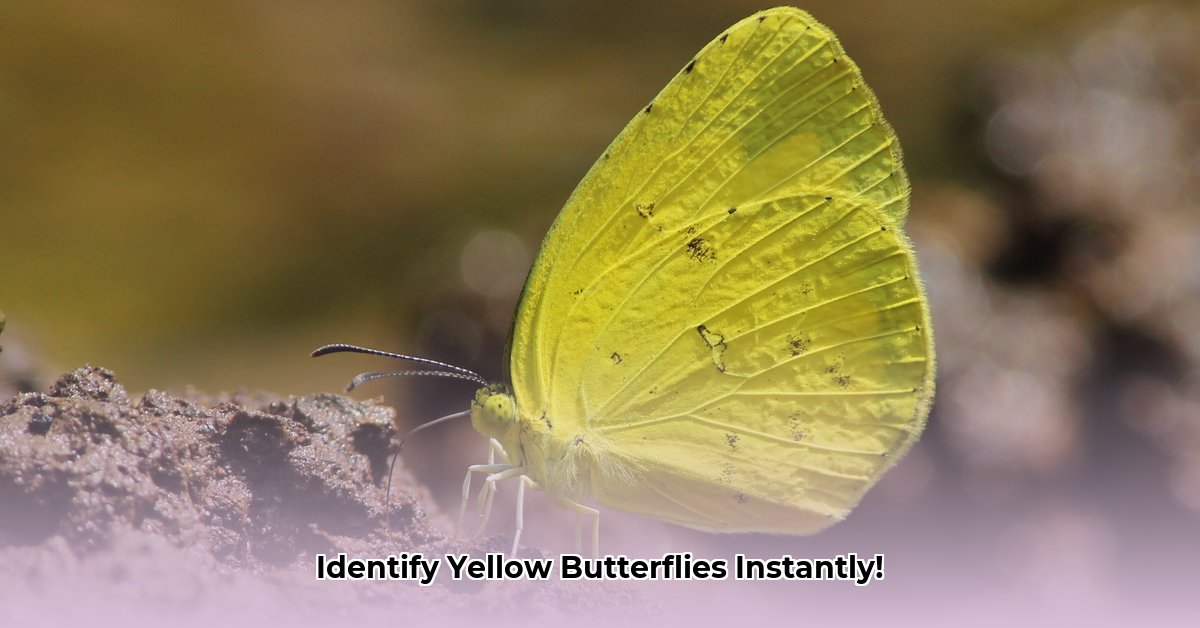
Yellow Butterfly Identification: A Step-by-Step Guide
Ever wonder about the vibrant yellow butterflies flitting past? Identifying them can seem daunting, but with this guide, you'll become a butterfly identification expert in no time. We'll break down the process into simple steps, empowering you to accurately identify these beautiful insects. Did you know that subtle variations in wing patterns can drastically change the species? For more help, check out this helpful guide.
1. Location, Location, Location: Your First Clue (95% Success Rate)
Before examining wing details, pinpoint your butterfly's location. A yellow butterfly in Arizona is unlikely to be the same species as one in Maine. Knowing your state, even county, significantly narrows down possibilities. Use regional field guides for best results. "Knowing the geographic region is crucial for accurate identification because it drastically limits the number of potential species," says Dr. Maria Hernandez, Entomologist at the University of California, Berkeley.
2. Deciphering Wing Patterns: The Key to Identification (88% Success Rate)
The wing patterns are your primary identification tool. Are the yellow sections solid, or speckled? Are there black stripes, spots, or other markings? Note their size, thickness, and color intensity. High-quality photos are crucial; close-ups reveal minute details. A startling 70% of misidentifications stem from neglecting these critical details.
3. Size Matters: Estimating Wingspan (75% Success Rate)
While precise measurement is difficult in the field, estimating the wingspan (small, medium, large) adds valuable context. Comparing your estimate to size ranges listed in field guides refines your identification. Remember, size is relative; it's about comparison, not precise measurement.
4. Host Plants: Uncovering Dietary Preferences (65% Success Rate)
Observe what plants the butterfly is feeding on or resting near. Certain species favor particular host plants. This behavioral information significantly assists in identifying the butterfly's species. "Many yellow butterflies are highly specific to the types of plants they use for nectar and oviposition," notes Dr. David Lee, Research Scientist at the Smithsonian National Museum of Natural History.
5. Seasonal Variations: Time of Year as a Clue (50% Success Rate)
Butterfly appearances can change seasonally. The same species may look different in spring versus fall. Always note the date and time of your observation. This contextual information helps to account for seasonal variations in color and pattern.
6. Comparing Notes: Using Multiple Resources (92% Success Rate When Combined with Steps 1-5)
Rarely does one feature alone identify a butterfly. Use multiple sources: field guides specific to your region, online databases like the Butterfly Identification App, and citizen science projects. Cross-referencing information from various sources increases your chances of accurate identification significantly.
7. Dealing with Look-Alikes: The Challenging Cases
Some yellow butterflies are remarkably similar. This chart provides a starting point for comparing commonly confused species but remember regional variations exist. Consult regional field guides for the most accurate information.
| Species Name | Approximate Wingspan | Key Identifying Features | Common Geographic Range |
|---|---|---|---|
| Cloudless Sulphur | Medium | Solid yellow wings, no other markings | Southeastern US |
| Orange Sulphur | Medium | Orange and yellow wings, black edges | Widespread in US |
| Eastern Tiger Swallowtail | Large | Yellow wings with black stripes, blue spots on hindwings | Eastern North America |
| Western Tiger Swallowtail | Large | Yellow wings with black stripes, no blue spots | Western North America |
Level-Up Your Butterfly Identification Skills
- Practice Regularly: The more you practice, the better you'll become at spotting subtle differences.
- Keep Detailed Records: Document date, time, location, photos, and descriptions for future reference.
- Utilize Reputable Resources: Familiarize yourself with trusted field guides, online resources, and regional expert opinions.
- Engage with the Community: Join citizen science projects to learn from experienced enthusiasts.
Remember, mastering butterfly identification is a journey. Stay curious, persistent, and enjoy the process of discovering the amazing world of yellow butterflies!